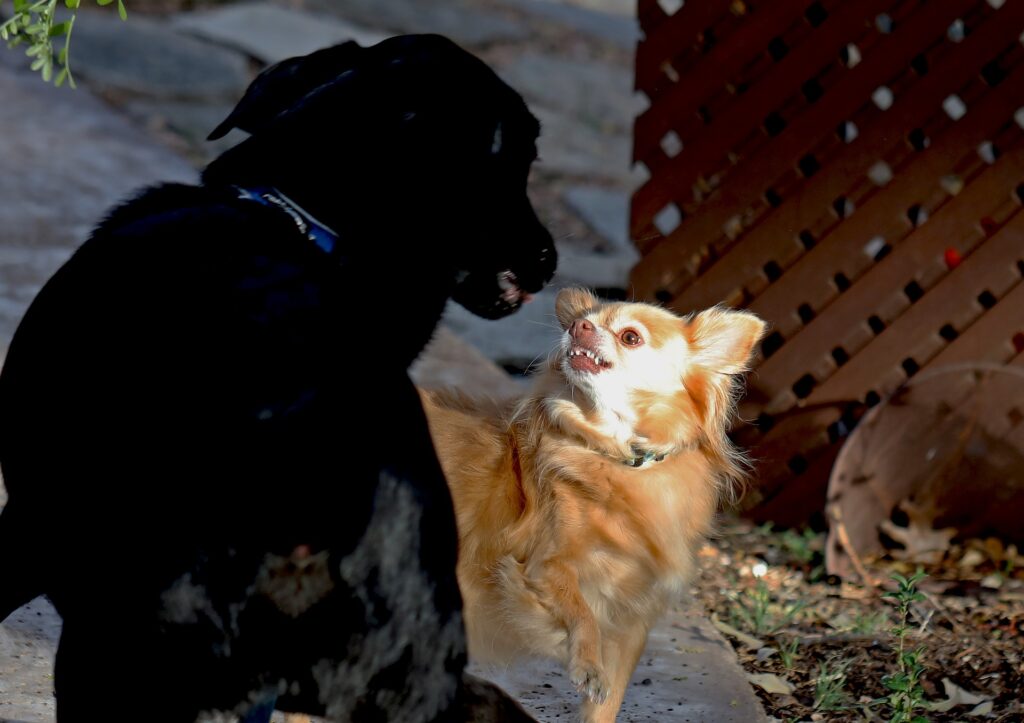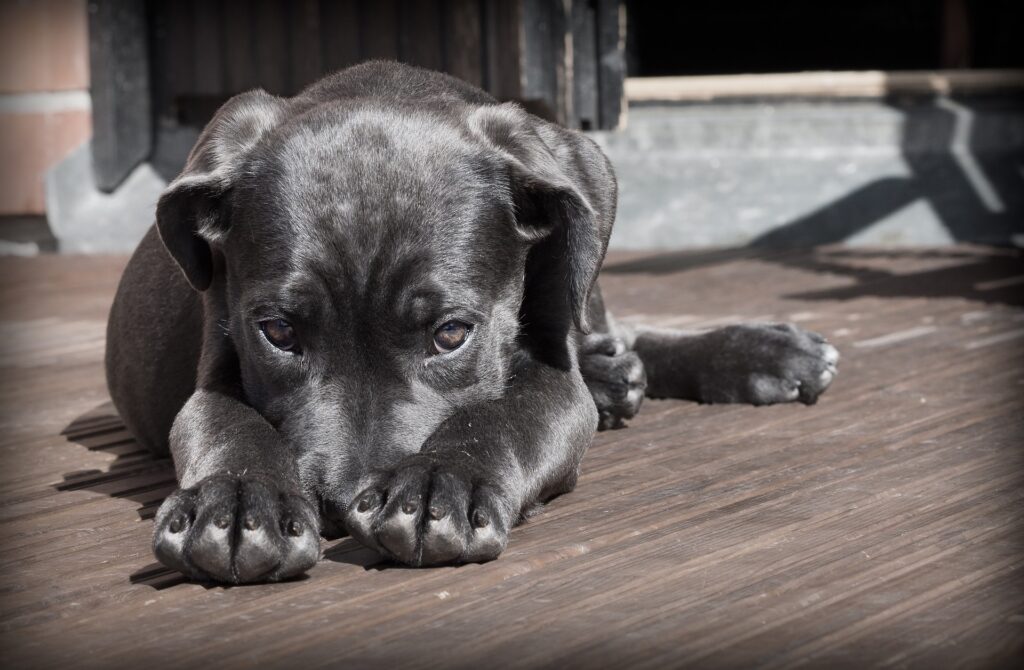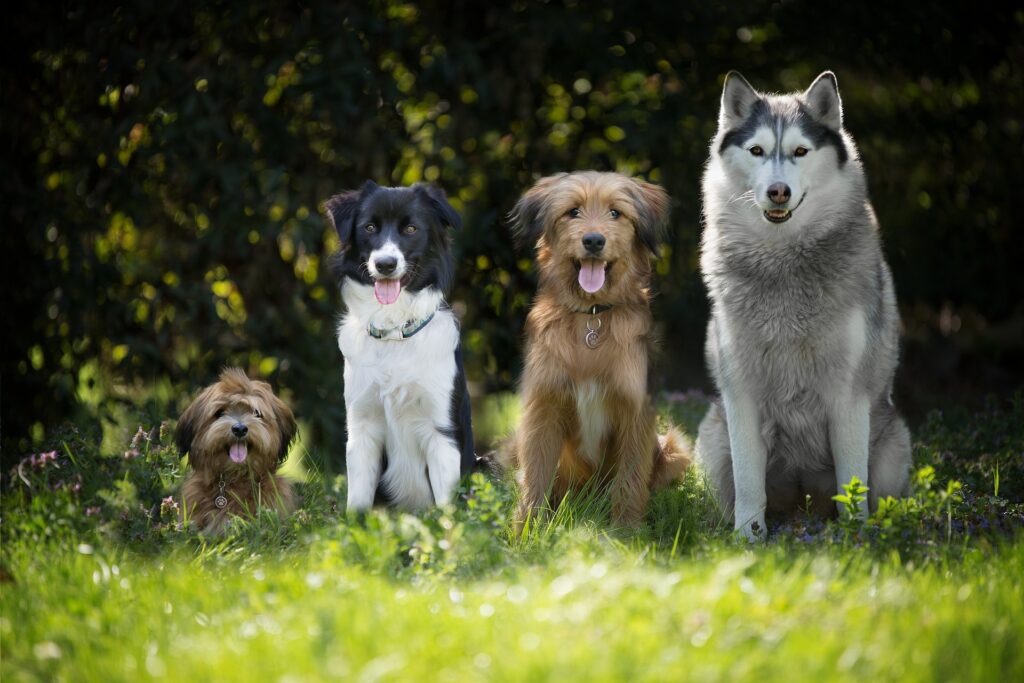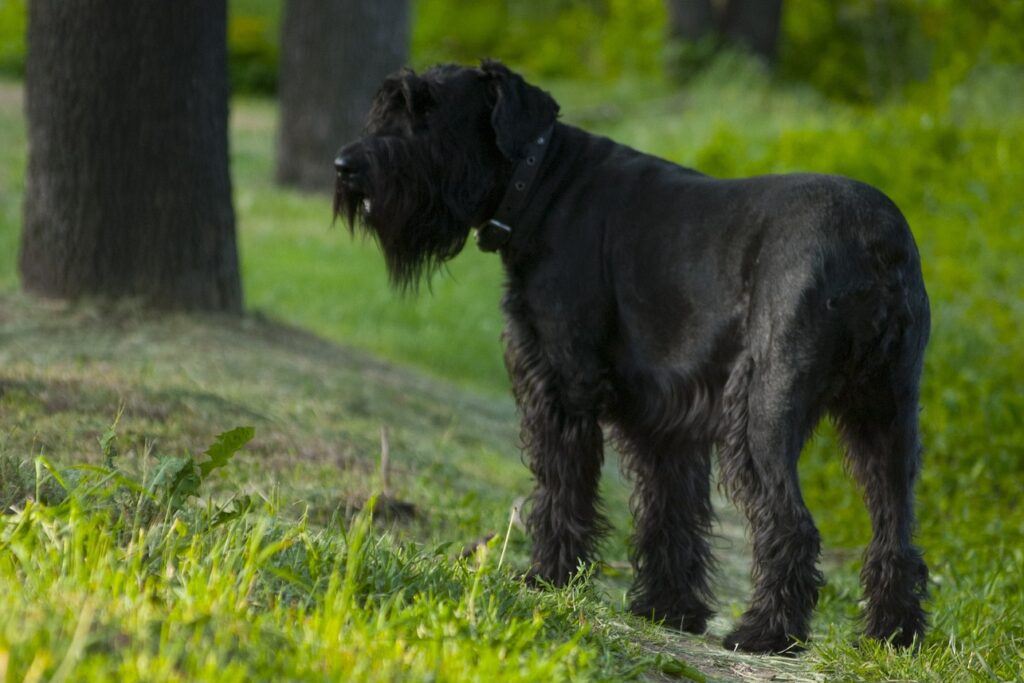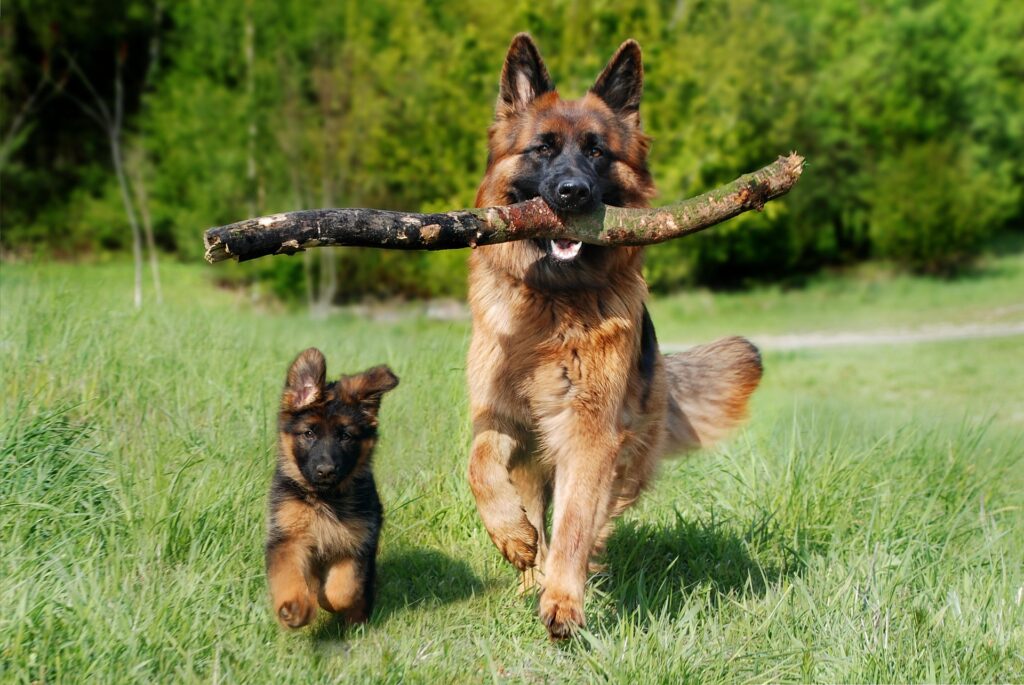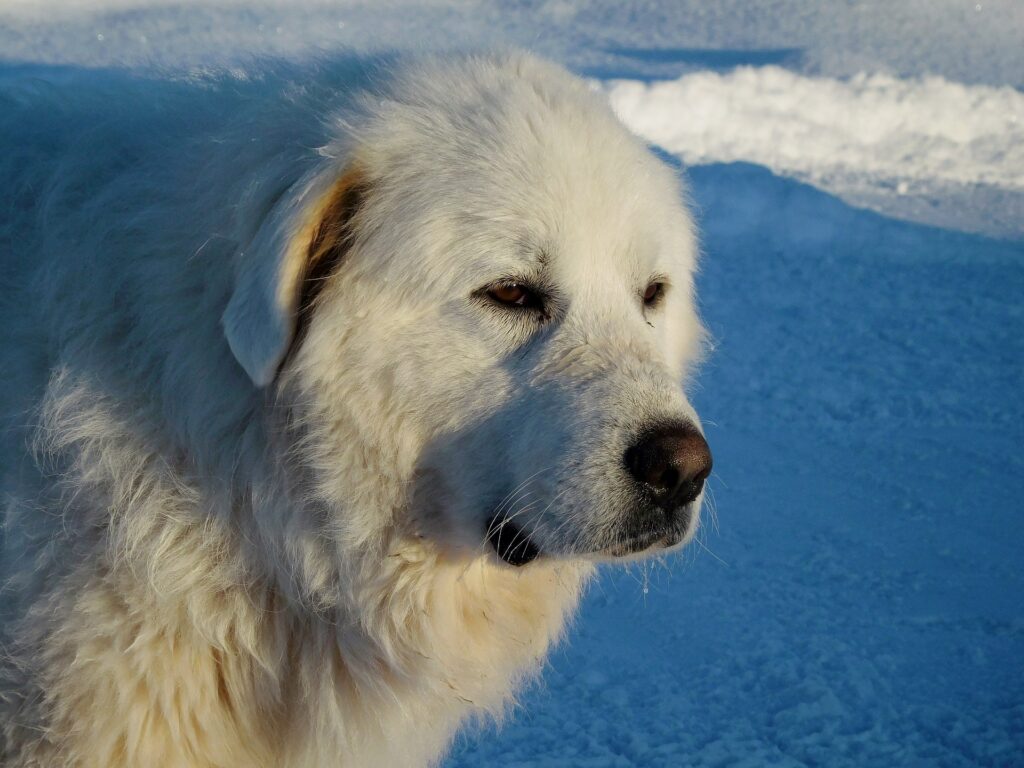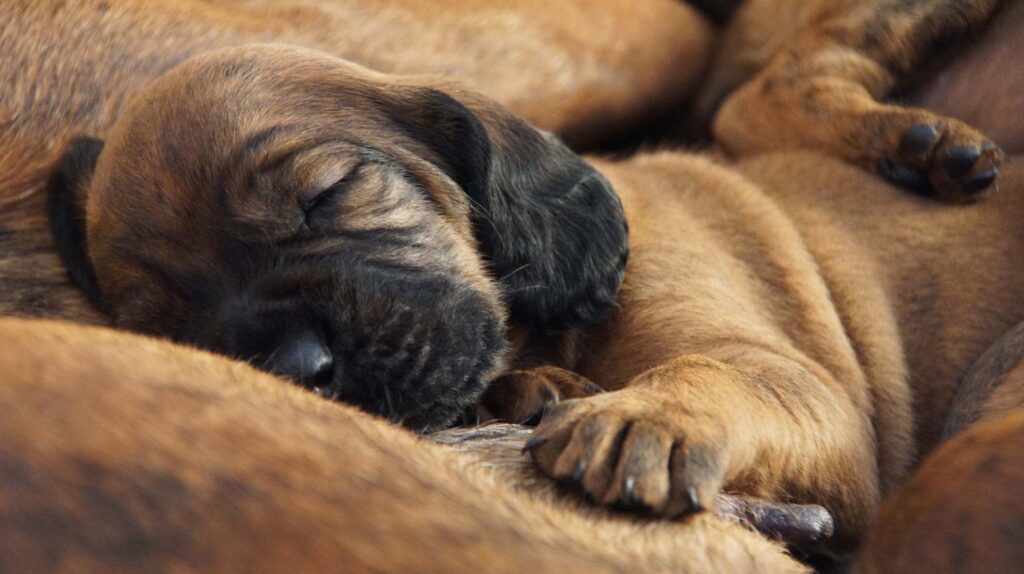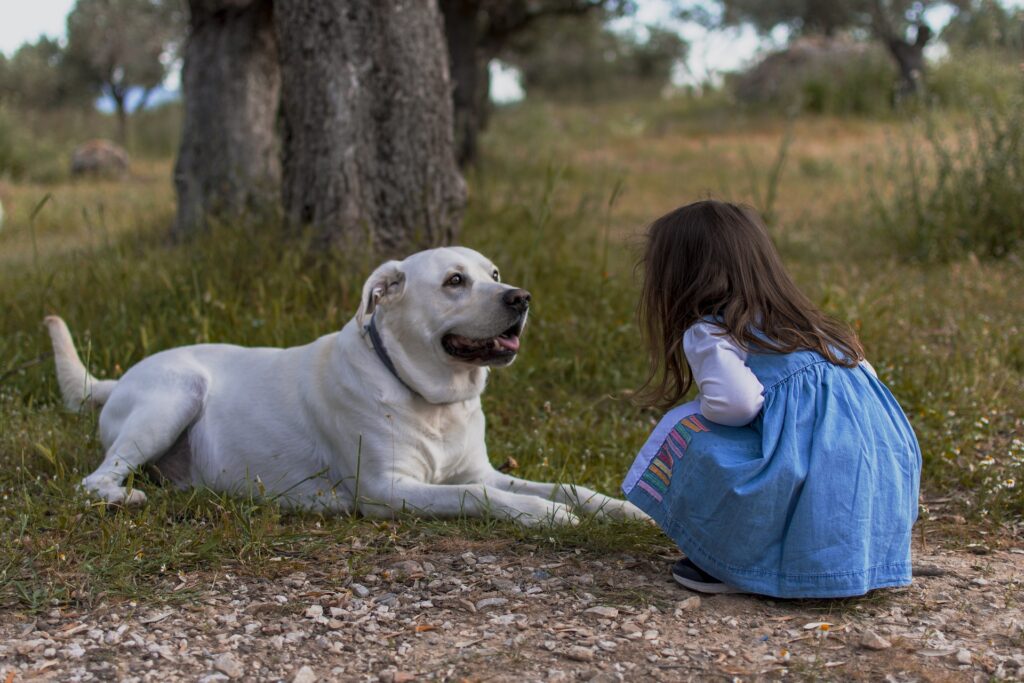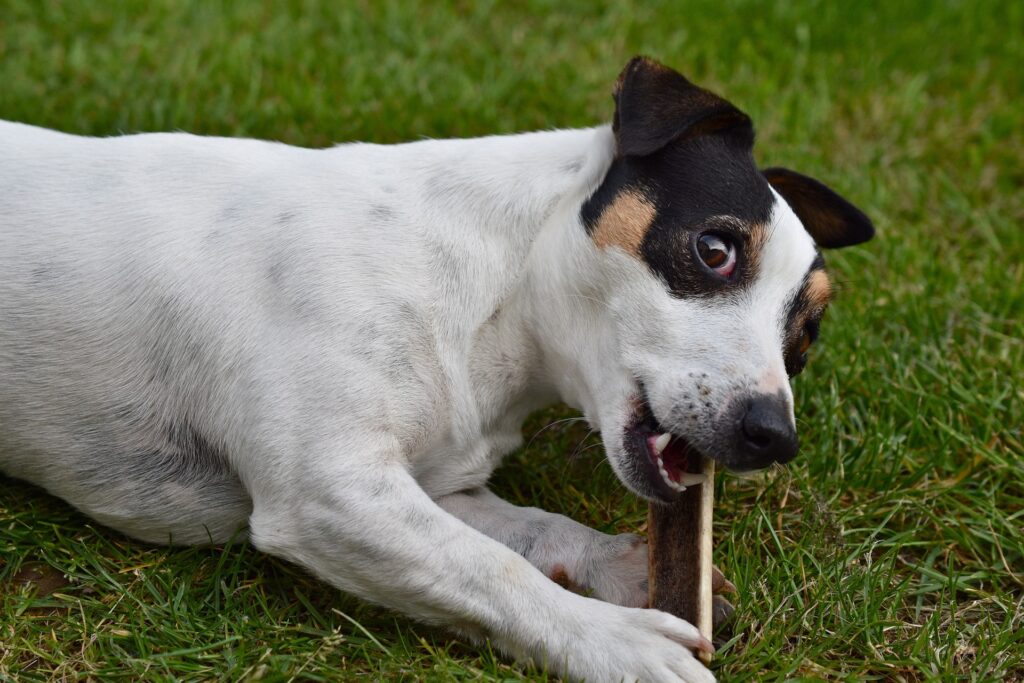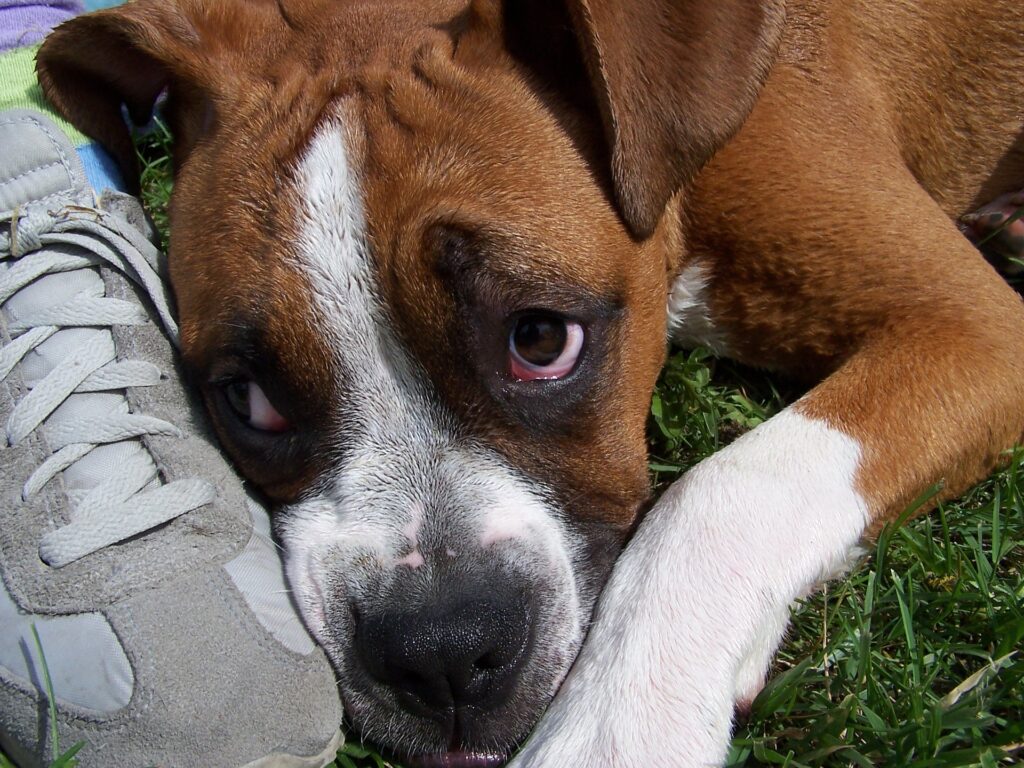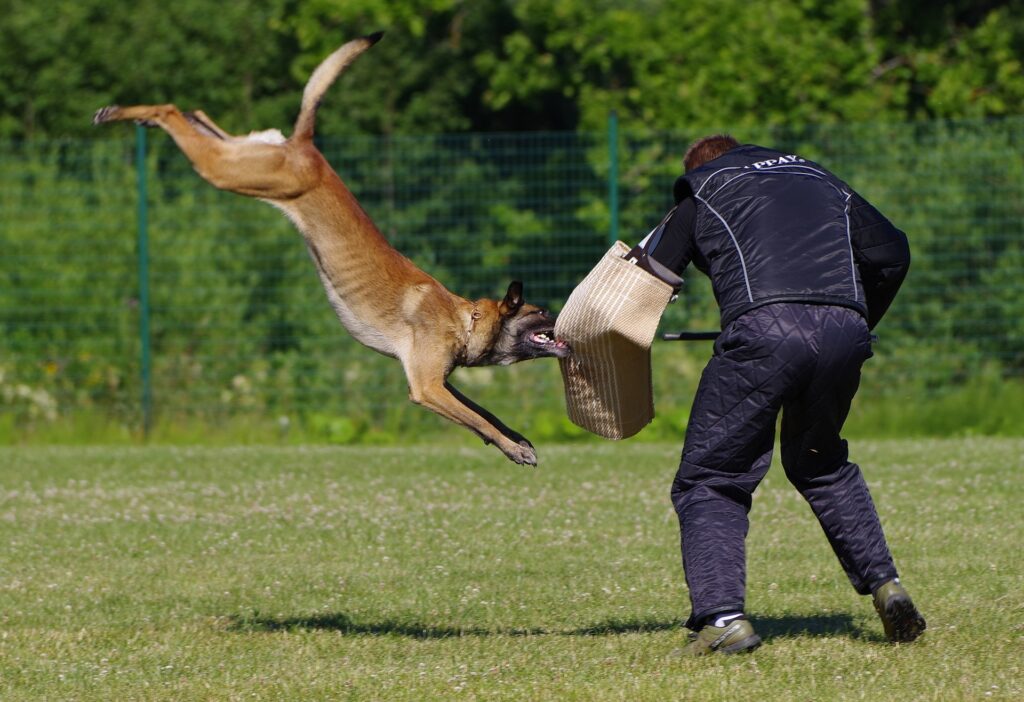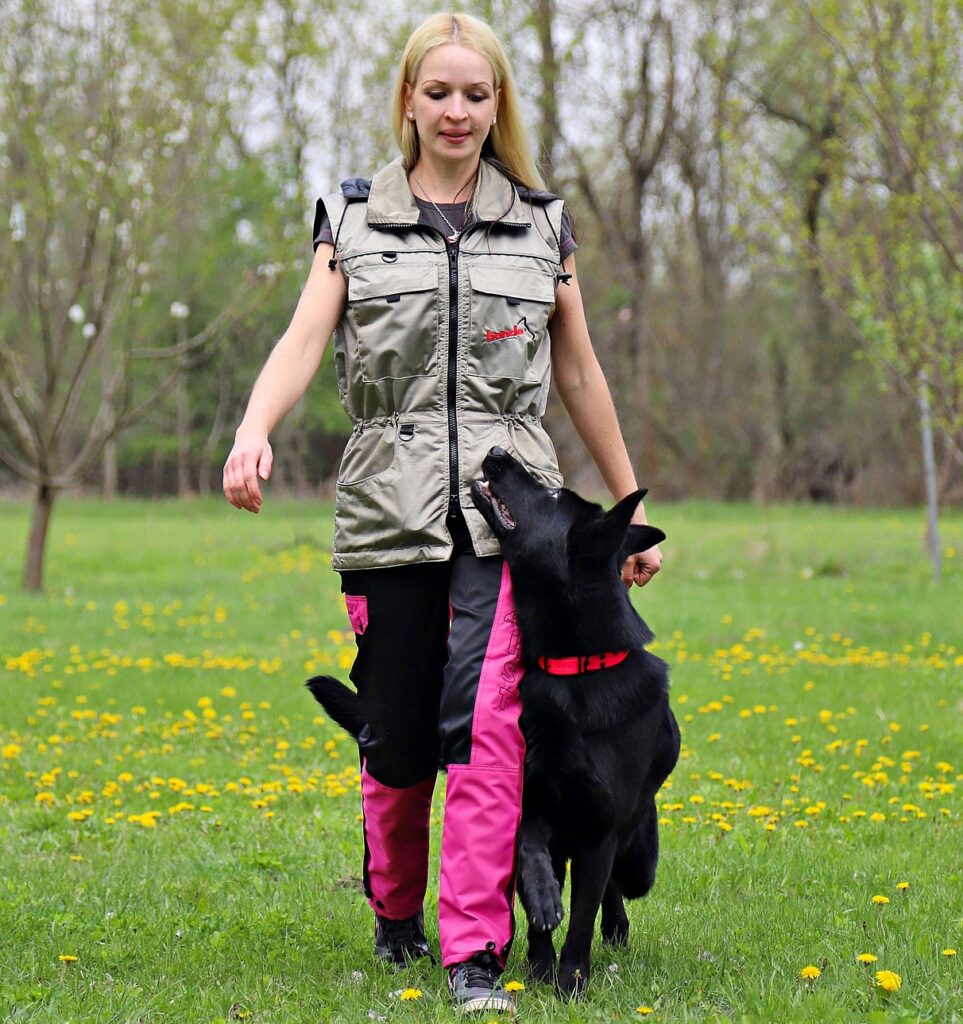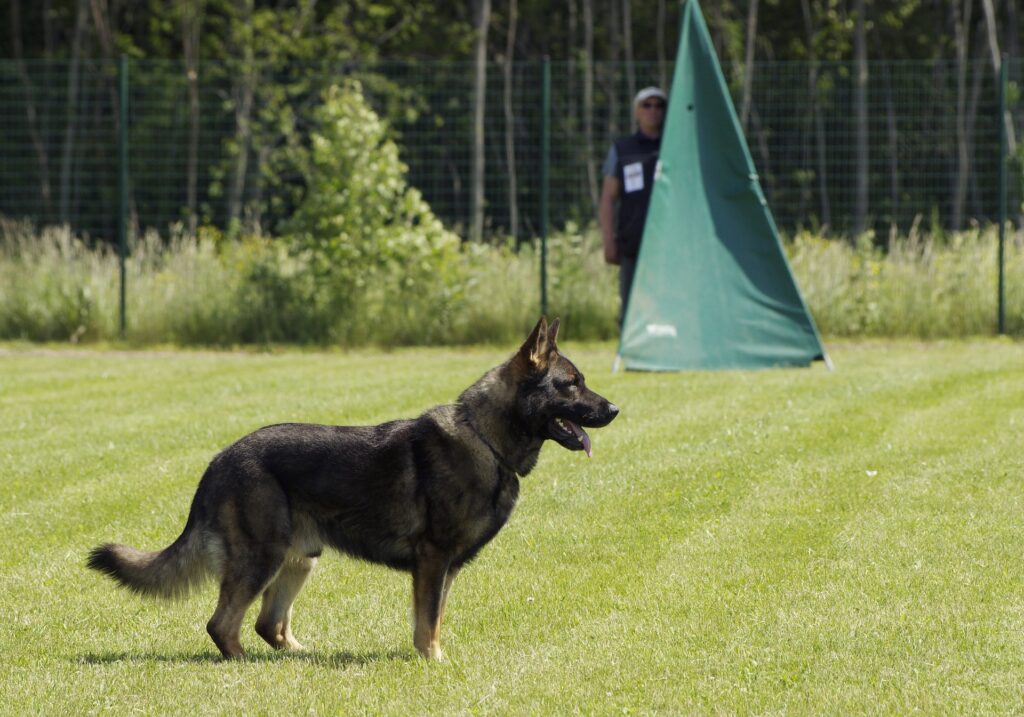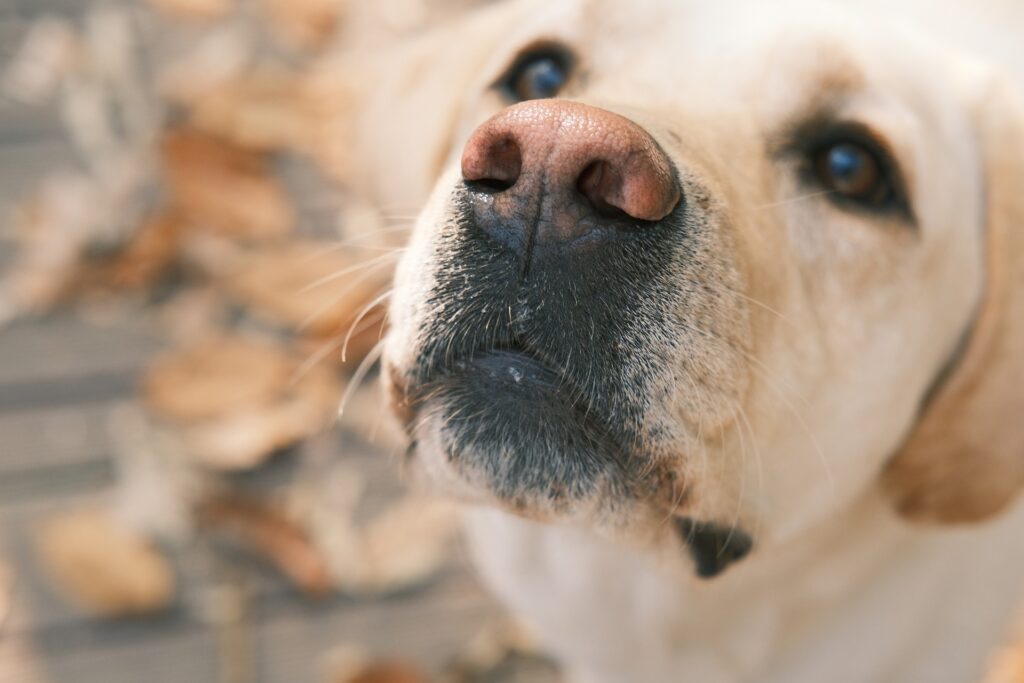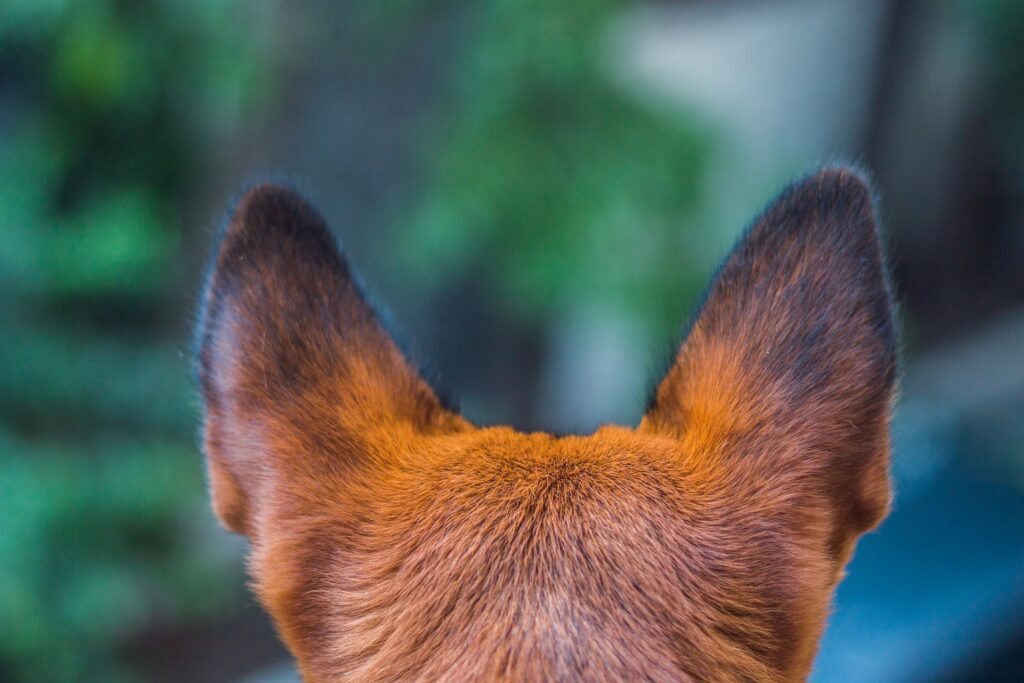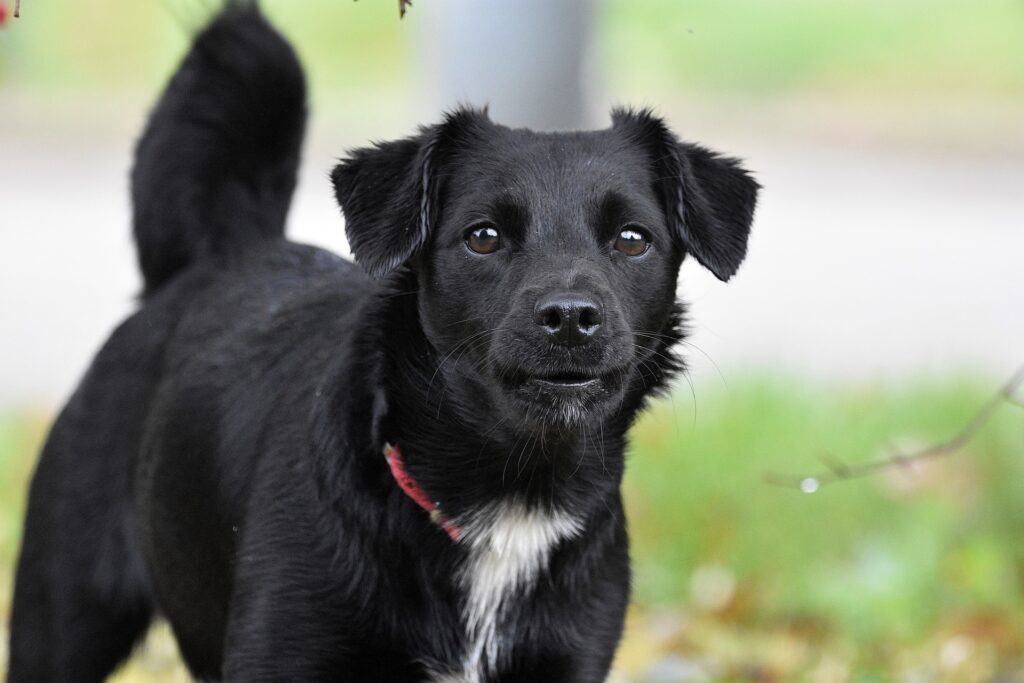
“He’s just protective of me.”
This is a common explanation we hear from pet parents when their dogs bark, growl, or lunge towards other people and dogs. There’s a prevalent belief that dogs are protecting their humans when they act out in aggressive ways towards others.
But is this true?
We want to see the best in our dogs. Explaining a behavior as protective is much kinder than labeling it aggressive. The definitions and connotations of each word leave different tastes in our mouths and can color our experience.
When a person attacks someone, we label that as aggressive. But if the person is a parent that is protecting their child, the picture looks completely different. The behavior is the same, but knowing the context creates a different emotional response from us.
But are dogs actually protective of their humans and families? And the million dollar question: Is your dog actually protective of you? The answer is more complicated than a yes or no. Let’s look at some different factors to answer this question as completely as possible.
What is the purpose of aggression?
To start, let’s take a look at why aggression exists in the first place. Aggressive behaviors serve to prevent harm to oneself or others.
If acting big and bad gets the threat to move away, then that behavior works for the animal in question, humans included. Following through on aggression is costly for all animals involved and can lead to death in many instances in the wild. Even if the animal “wins” the fight, infections from wounds or broken legs can lead to a slow and painful death.
Some dogs when faced with a potential threat will act big and threatening back. Others might slink away and hide. But even the dogs who act big and bad may not actually follow through on their threats when push comes to shove. While we don’t recommend testing a dog’s limits, dogs acting aggressive as a bluff has been seen before.
Oftentimes, dogs who are frightened will seek help from their trusted family members. Many guard dogs historically have had the job of letting their humans know a threat approached so the humans could do something about it, not them. Or so that they could team up together instead of going solo. There is strength in numbers.
Are certain dog breeds protective?
Next, let’s look at breeding history. For generations, dogs have been bred by humans to do different jobs.
For example, the famous Border Collie has been selectively bred to herd sheep and enjoy making animals move and stop with the pressure of their bodies.1 The Labrador Retriever was bred to retrieve game in cold water with their weather-resistant coats to protect them and thick otter-like tails to help them steer while swimming.2
In contrast, we have the history of the Giant Schnauzer. These dogs were bred in the mid-1800s to help drive cattle from farm to market. They also served as guard dogs for farmers, merchants, and inn-keepers. When railroad use made cattle driving less common, these dogs changed careers to become European police and military K-9s. So while driving cattle was important to the start of the breed, Giant Schnauzers were and are prized for their guarding capabilities.3
Another dog we can look at when it comes to selective breeding for guarding ability is the loyal German Shepherd Dog. These dogs were originally bred to herd sheep. It was only later that their other qualities began to be prized in the K-9 handling world.
They are famous for their intelligence, agility, speed, and stealth. They also do well with the families who raise them. Ask any German Shepherd Dog family and they will tell you how they are selective and loyal to their favorite people. These are qualities that sheep herders wanted when developing this breed.4 Many herding dogs are sensitive to changes in their environment and anticipating another animal’s movement requires great perception.
The last dog breed’s history we’ll mention here is the Great Pyrenees. These dogs fall into the livestock guardian category and are in the working dog group. Their original job was to bond with their flocks, watch over them, and deter predators (including human livestock thieves). They did not move the flock like the herding breeds, but were just as important for keeping them safe and alerting to danger. Most of their job was to sit and observe their surroundings so when a threat appeared they could alert to it and guard their flock from it.5 It is because of dogs like livestock guardians that spike collars exist. These collars helped protect the working dog’s neck from attack.
While many different breeds of dogs can show aggressive or reactive tendencies, looking at the history of their job can give some clues as to the root of the behavior, and what they might actually be doing. Many dogs who have historically been used for protection are environmentally aware and see changes to their environments as something dangerous.
But breed alone does not determine protective instinct. Saying so would erase other important factors that make the whole picture. We often akin this to looking at one’s genetic siblings. Just because you have the same genetic parents doesn’t mean you turned out exactly the same. There are still variations.
The role of development: Is your dog protecting you or themselves?
Another element we need to discuss when looking at protective tendencies in dogs is looking at their developmental stages as they grow.
When dogs are puppies, they rely on their mothers and human caregivers for the first eight to twelve weeks of life. Once they hit that age, humans typically take over full time.
At this stage when they are curious about the world, they may be very capable of forming attachments to their caregivers. But as puppies age and grow up, they start to become more independent.
As animals mature and gain more independence, they will need to start looking out for themselves more and more. They start to learn that there are dangers in the world and threats that they should be wary of. Dogs are no different.
Usually this tendency shows up when dogs encounter things they have not seen before while growing up. If something isn’t familiar, it could be a threat. For example, there are many dogs who do not grow up around small children. As they age and mature, when they see children for the first time, they could start to display some wary tendencies. Depending on their learning history and genetics, they might see small children as a threat because they are so different from the adult humans they are used to.
This is usually when people start looking for help. However, some people may delay in reaching out if their dog is wary of adult strangers, perhaps thinking that the dog is only being protective of them. It’s easier to write off your dog’s wary behaviors if the thing that makes them uncomfortable is capable of posing a potential threat.
To make this situation more complicated, dogs can start to develop fears of things they used to have no problems with in the past. Just because a dog has seen a plastic bag at home doesn’t mean that a plastic bag flying down the street in the wind is the same thing to them. It is possible to start seeing concern developing around familiar objects and people, especially if something about that stimulus changes the dog’s perspective. As they become more observant of their environment, they realize that maybe the way something moves and sounds is unsettling to them.
But when threats appear, who are the dogs really protecting? You? Themselves? Both?
Protective or possessive?
The next item we need to address when looking at protective tendencies in dogs is how dogs view resources.
Resources can refer to anything a dog finds valuable. This can be food, water, comfy sleeping spots, and even attention. When dogs possess something, like a chew bone, they can give really good warning signs that they do not want to share.
If a dog approaches another while they have a toy or chew, you may notice the dog with the item becomes still, dips their head over the item, and looks at the approaching dog with the whites of their eyes showing. If the approaching dog notices these signs and disengages from the situation, further conflict doesn’t usually arise.
This is a form of resource guarding, which all animals are prone to in some regard. It’s the reason we lock our cars, place items in our homes for safekeeping, and use bank accounts.
Resource guarding gets to be a problem when it is inappropriate and the response does not match the situation.
If you attempt to steal a french fry from a friend, you don’t expect your friend to sink a knife into your hand to stop you. Worse yet, if you walk by your friend while they have a plate of food and you’re minding your own business, you don’t expect your friend to chase you out of the house with a knife just for walking by.
This idea is important to consider when looking at protective tendencies in dogs because it is possible for dogs to value humans the same way they value other resources. There are dogs who resource guard their humans from other people and other dogs.
The difference between resource guarding a human and protecting them is based on the situation. Dogs can resource guard their humans when dogs and people approach to interact in a friendly manner, not a threatening one. It’s important to remember that some dogs will misinterpret friendly human gestures as aggressive, such as hugging, but that is an article for another time.
Resource guarding is based on an insecurity that the resource is limited. If you give your attention to another dog, your dog could perceive the other dog as taking attention away from them.
Depending on the context of when your dog reacts aggressively, you could be looking at resource guarding instead of protection from bodily harm or perceived threats.
Bite-sport dogs: Are they protective?
But what about dogs who are trained to protect their people in bite-sports? Are these dogs actually protective?
Dogs can be trained to do protective behaviors, but many of these dogs see this as a fun game rather than a dangerous situation. While we can’t ask these dogs how they feel about the situation directly, their body language during training and trials implies that they are enjoying themselves. These dogs love doing their protection tasks.
In IGP (formally known as IPO/Schutzhund), dogs must pass a temperament test in order to prove they are mentally sound, including a test where the handler is not present when they see other dogs and people. If there is no threat to the dog or handler, these dogs are required to be calm and collected. A jogger minding their own business and running by a dog is not a threat. If these dogs cannot pass the required temperament test, they cannot compete in IGP.6 The United Schutzhund Clubs of America even has a strict protocol for incidents of dog aggression during a trial.7
Other bite-sports do not require a temperament test, but the culture for bite-sports puts a heavy emphasis on handler responsibility. Most handlers get dogs who are specially bred for this kind of work and know what they are getting themselves into. They are careful about the situations they put their dogs in. The risk of a bite-sport dog aggressively biting someone in the wrong situation is low due to this culture and management.
Bite-sport handlers know how critical it is that their dogs recognize when it is and isn’t time to work. There’s too much liability if they perform these behaviors in the wrong context. While many of these dogs are trained to read the context of the situation, they are also under heavy stimulus control and are waiting for the go ahead from their handlers. For many of these dogs, the context of the competition setting creates a stark picture. There is a high likelihood that bite-sport dogs would be confused if cued by their handler to bite someone out on the street.
Not all dogs would enjoy doing this work. It takes a confident dog who doesn’t mind heavy push-back to go into bite sports. Many professional handlers are looking for dogs who do not back down and enjoy the intensity.
But can untrained dogs have a protective instinct?
True protective instinct of family does exist, but it can be difficult and dangerous to test, even when done by a professional. This test can put a lot of stress on a dog and many dogs who are tested for this instinct are never the same afterwards. The event can be traumatizing. For people competing in bite-sports with their dogs, this kind of test can ruin the dog’s potential to compete.
Surprisingly, many dogs can have this protective instinct and be very sound around strange dogs and people in other contexts. The situation to protect one’s family can rarely come up for the average suburban dog. It also helps that many threatening people don’t want to be the ones to find out if a dog will defend themselves or their family. Dogs are good deterrents in and of themselves.
Is your dog protective?
While it is possible for your dog to be protective of you, the majority of dogs who react aggressively around their humans are concerned for their own safety, not their human’s. Or they feel the need to keep their human all to themselves.
Regardless of the intention of the dog, a dog who acts aggressively in non-threatening situations can be a risk not just to others, but to themselves. We have a common saying in the dog training industry that dog bites are deadly to the dog.
Working with a trainer on aggression issues can help decrease both you and your dog’s stress levels, boost your dog’s confidence, and reduce your dog’s hypervigilance. Living with high levels of stress can be harmful and seeking professional help can be just what you need to resolve the situation. A pro can help guide you and get to know the needs of you and your particular dog.
This type of training can take time, consistency, and a slow approach. Having a trainer who is experienced in dog aggression, behavioral science, dog body language, and coaching people to work with their dogs is a must.
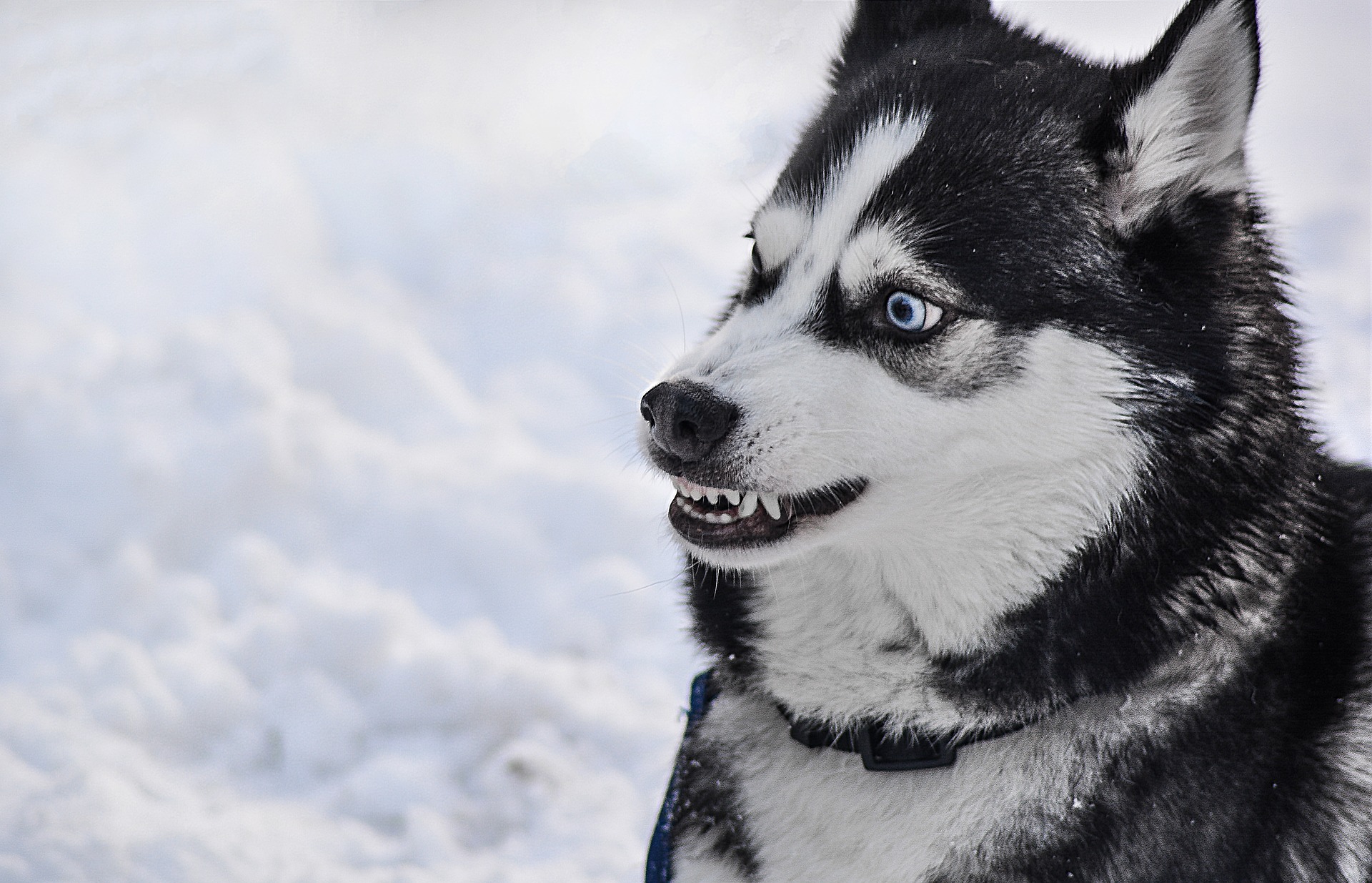
Is your dog showing signs of aggression?
Having a dog who behaves aggressively can be heartbreaking. You know a different side of them that others don’t get to see.
It’s hard to know what to do and how to help your dog see that everything is okay. The journey can feel lonely at times.
We can help.
Our trainers have helped many families with reactivity and aggression in their dogs. We know you love your dog and know you want them to be happy and confident.
Let us show you how. Message us for your free consultation to get started.
- Border Collie information: Source ↩︎
- Labrador Retriever information: Source ↩︎
- Giant Schnauzer information: Source ↩︎
- German Shepherd Dog information: Source ↩︎
- Great Pyrenees information: Source ↩︎
- IGP temperament test information: Source ↩︎
- United Schutzhund Clubs of America dog aggression information: Source ↩︎


